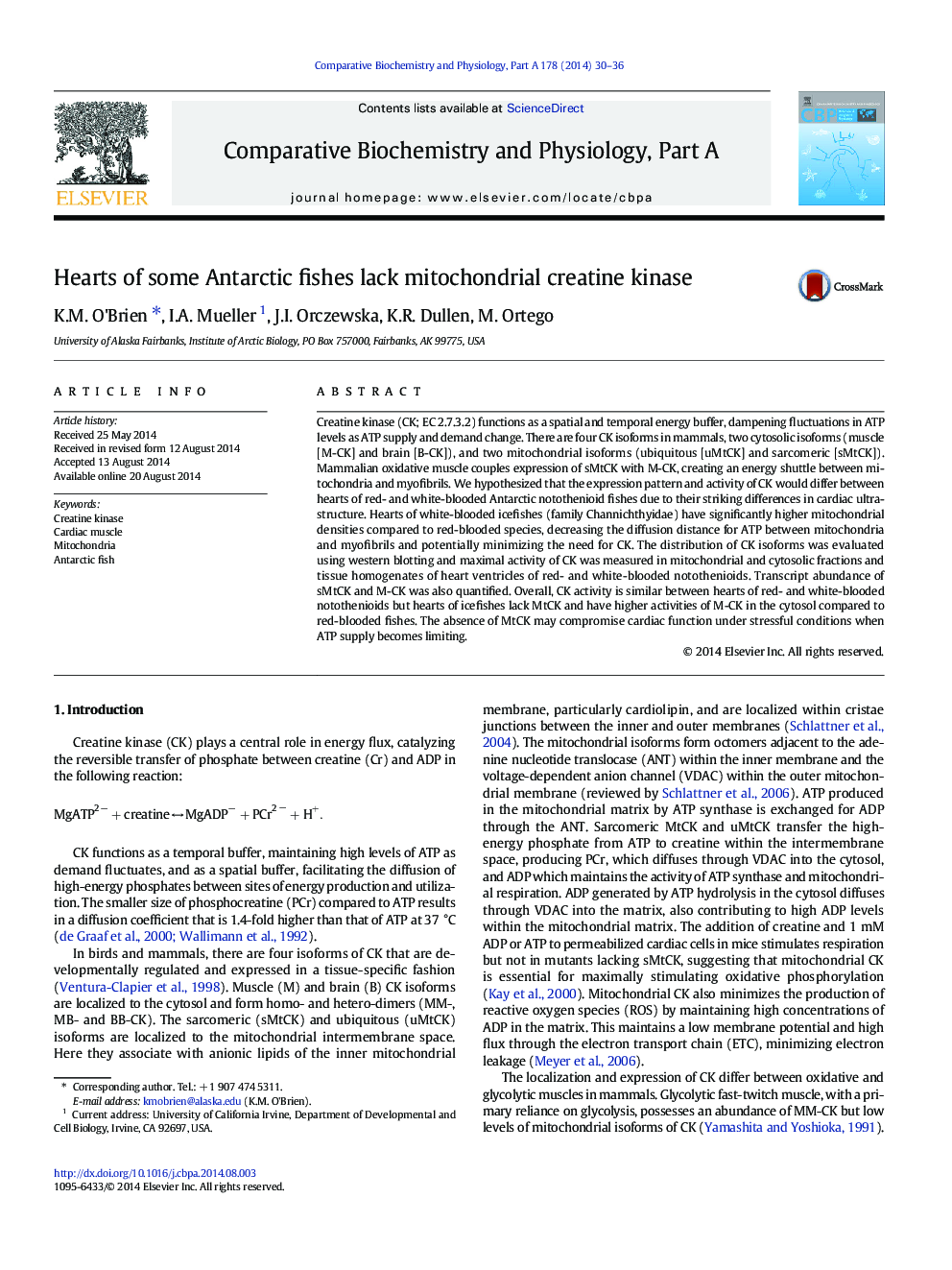| Article ID | Journal | Published Year | Pages | File Type |
|---|---|---|---|---|
| 1972164 | Comparative Biochemistry and Physiology Part A: Molecular & Integrative Physiology | 2014 | 7 Pages |
Creatine kinase (CK; EC 2.7.3.2) functions as a spatial and temporal energy buffer, dampening fluctuations in ATP levels as ATP supply and demand change. There are four CK isoforms in mammals, two cytosolic isoforms (muscle [M-CK] and brain [B-CK]), and two mitochondrial isoforms (ubiquitous [uMtCK] and sarcomeric [sMtCK]). Mammalian oxidative muscle couples expression of sMtCK with M-CK, creating an energy shuttle between mitochondria and myofibrils. We hypothesized that the expression pattern and activity of CK would differ between hearts of red- and white-blooded Antarctic notothenioid fishes due to their striking differences in cardiac ultrastructure. Hearts of white-blooded icefishes (family Channichthyidae) have significantly higher mitochondrial densities compared to red-blooded species, decreasing the diffusion distance for ATP between mitochondria and myofibrils and potentially minimizing the need for CK. The distribution of CK isoforms was evaluated using western blotting and maximal activity of CK was measured in mitochondrial and cytosolic fractions and tissue homogenates of heart ventricles of red- and white-blooded notothenioids. Transcript abundance of sMtCK and M-CK was also quantified. Overall, CK activity is similar between hearts of red- and white-blooded notothenioids but hearts of icefishes lack MtCK and have higher activities of M-CK in the cytosol compared to red-blooded fishes. The absence of MtCK may compromise cardiac function under stressful conditions when ATP supply becomes limiting.
